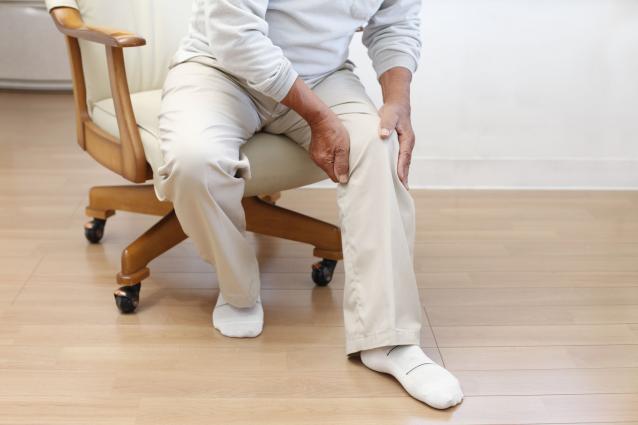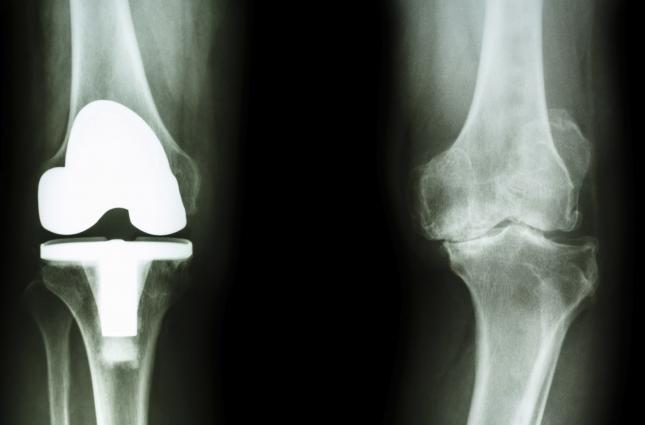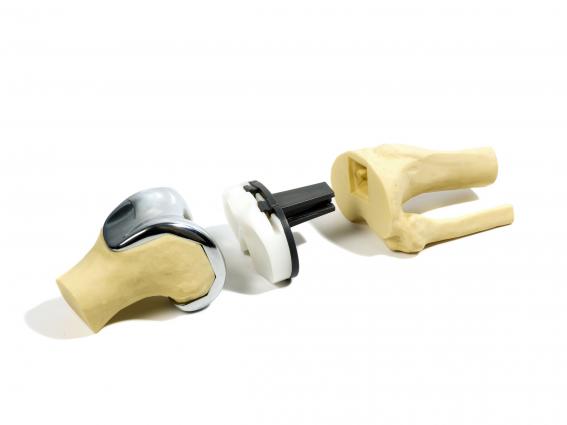What is a Total Knee Replacement (total knee arthroplasty) ?
A total knee replacement is a surgery performed to replace your damaged knee joint. The knee joint, comprised of the femur and the tibia, may be damaged from medical conditions, injuries, or from repetitive motion. As a result, the knee becomes painful with movement and swelling may occur. Because cartilage (a soft tissue that absorbs stress and allows the joint to glide smoothly) cannot repair itself, your surgeon may recommend that knee replacement surgery be performed for pain relief and return to normal walking.
When do I need a Total Knee Replacement ?
Whenever pain becomes constant, unbearable and your walking capacity becomes reduced to the point that you cannot complete simple everyday tasks like walking around in your house, using the stairs or going out for a short walk, you must start discussing the surgery with your doctor.
How is the surgery performed ?
Knee replacement surgery involves replacing the entire damaged joint. During the procedure, the damaged parts are removed and replaced with implants made of titanium and polyethylene parts. An incision, or cut, will be made on the front side of the knee, and the damaged knee is replaced with a prosthesis (artificial joint). The surfaces of the joint are cleaned and accommodate the prosthesis parts to the thighbone, kneecap, and tibia and a new joint is formed.
How do I prepare for the surgery ?
Before the surgical procedure, it is important to prepare your body as well as the home for the surgery and the post-operative period (time after surgery). The following is a list of things to do before your scheduled surgery :
- Make an appointment to see your anesthesiologist for a pre-operative work-up. This is done to ensure that you are in good health to have the surgery. An ECG (electrocardiogram) and laboratory work will be ordered. Any medical conditions that require better control prior to surgery will be discussed.
- Make an appointment to see your dentist for an examination (if not done within 6 months). Germs in the mouth could enter the bloodstream and infect the new joint, delaying your recovery healing. Therefore, any tooth or gum problems should be addressed prior to the procedure to decrease the risk of any complications.
- Depending on when your surgery is scheduled, you may need to fast (nothing by mouth) prior to your surgery. It is recommended that you do not drink or eat anything at least 8 hours before surgery.
- If you smoke cigarettes or tobacco products, you should stop. Nicotine can increase your chances of having surgical complications, and can delay healing.
- If you are overweight, explore dietary changes and an exercise regimen that will assist you with weight loss and strengthening before the surgery. Being overweight may cause you to have slower healing and recovery time. Exercises that are easy on the knee joint include low-impact exercises such as swimming and riding a stationary bike.
- Prepare your home for your recovery period. Start by reducing household hazards, such as carpets, electrical cords, and disorder that may cause you any injuries during your recovery. Also, if possible, move frequently used items to a main level in your home. This will help reduce the amount of reaching and stairs climbing you have to do.
After Surgery
After the anesthesia wears off and you are more awake and alert, you will be taken to your hospital room. The next day, your leg will be placed in a continuous passive motion machine, to start mobilizing your new knee joint. The nursing staff and physical therapy team will work with you to start walking and moving after surgery during your hospital stay (usually 3-4 days) in order to develop an activity plan that works well for you and gets you moving on your new joint. While in the hospital, and after you return home, you will be prescribed a daily medication to prevent blood clots from forming after surgery. A blood test (platelets) will be taken periodically to monitor your blood and determine if it is too “thick” or “thin” and will guide your medication dosing.
Returning Home
After you are discharged from the hospital, you will need to continue with physical therapy, either self-directed or with a physical therapist, to promote flexibility and mobility in your new knee joint. The hospital will arrange for an appointment with your orthopedic surgeon approximately 10-14 days after surgery. At that time, your physician will evaluate your surgical incision, progress in physical therapy, knee flexion and extension, and your pain level.



